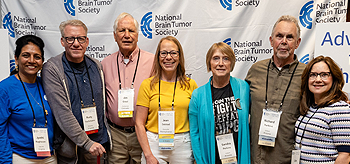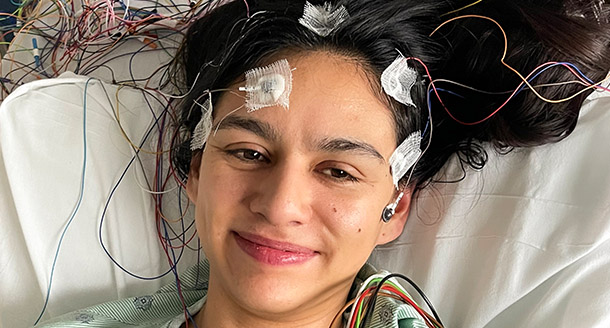Overview
Embryonal tumors are a group of brain and CNS tumors that begin in the fetal (embryonic) cells of the brain. Atypical teratoid/rhabdoid tumor (AT/RT) is a type of high-grade and fast-growing embryonal tumor that primarily affects very young children, although it can also occur in older children and young adults. It can occur throughout the central nervous system (CNS), although AT/RTs are rare along the spinal cord. Signs and symptoms depend on the age of the patient, the location of the tumor, and the size of the tumor. In infants, signs and symptoms often include lethargy, vomiting, and failure to thrive. Other signs include head tilt and paralysis of the cranial nerves. In children over 3 years of age, headache and paralysis of one side of the body are more common.
2021 WHO CNS Grade
A tumor grade describes how normal or abnormal tumor cells appear under a microscope. In lower grade tumors like grade 1, the cells look close to normal. In higher grade tumors like grade 4, the cells look more abnormal. Atypical teratoid/rhabdoid tumors are considered grade 4.
Statistics
AT/RT is a type of embryonal tumor. Please note that these statistics are representative of all embryonal tumors and not solely AT/RT.
- Percent of All Brain and Other CNS Tumors: 0.6%
- Average Annual Age-Adjusted Incidence Rate: 0.21 per 100,000
- Median Age at Diagnosis: 8 years
Survival
Survival rates compare the percentage of people living with a particular diagnosis at a particular point in time compared to the general population.
AT/RT is a type of embryonal tumor. Please note that the following statistics are representative of all embryonal tumors and not solely AT/RT.
- One-Year Relative Survival Rate: 83.6%
- Five-Year Relative Survival Rate: 65.0%
- Ten-Year Relative Survival Rate: 58.4%
Treatment Options
Every person living with a brain or CNS tumor is unique. If you have been diagnosed with a brain or CNS tumor and would like to better understand your treatment options, it is important to work with your health care team to decide the best course of treatment for you. You may also consider getting a second opinion or reaching out to our Personalized Support and Navigation team to learn more.



